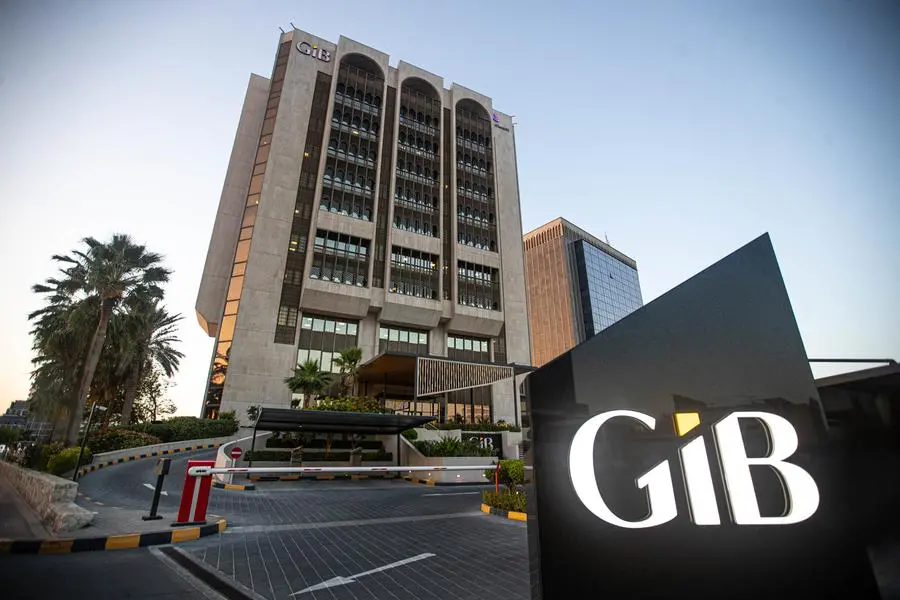Two new meta-analyses confirm once-daily Lantus efficacy and reduced risk of hypoglycaemia compared to NPH Insulin, With lower dose, Lantus achieves similar and well tolerated glycemic control versus insulin detemir
Today, Sanofi-aventis (EURONEXT: SAN and NYSE: SNY) announced the results of new analysis that found a significantly lower risk of nocturnal hypoglycemia with Lantus (insulin glargine [rDNA] injection) as compared to NPH insulin. A separate post-hoc sub-analysis found a greater HbA1c and FBG reduction for elderly patients over 65 years of age taking Lantus as compared to NPH insulin. In addition, Sanofi-aventis announced results of a head-to-head study providing further evidence on the efficacy of once-daily, 24-hour basal insulin Lantus (insulin glargine [rDNA] injection) compared to twice-daily insulin detemir. Both the analyses and the study were presented during the 45th Annual Meeting of the European Association for the Study of Diabetes (EASD) in Vienna.
Diabetes treatments are aimed at lowering the glucose in the blood, in order to delay the appearance of complications. Insulins are given as a substitute (Type 1) or a supplement (Type 2) to natural insulin secretion.
"Type 2 diabetes is a growing epidemic in the UAE, it is our duty as specialists to continue to explore all means to manage this disease," said Dr. Hisham Mahmoud, Medical Director Gulf countries, Sanofi-aventis, "There is a general misconception about insulin therapy among patients in the Middle East; they might assume that only advanced cases of diabetes succumb to this kind of therapy. Initiating insulin immediately, if patients are not achieving target glycemia, will allow better control of the disease. These studies further reinforce the early use of insulin glargine, proving its efficacy in the treatment of diabetes."
The first analysis demonstrated that should they be treated with Lantus, within 6 months, 1 in 8 patients using Lantus would avoid a confirmed symptomatic event compared to patients using NPH (p<0.0001). They also found that there was a significantly lower risk of nocturnal hypoglycemia with Lantus treatment and that daytime symptomatic hypoglycaemia tended to be lower with Insulin Lantus vs NPH, but the differences were not statistically significant.
"The avoidance of confirmed symptomatic hypoglycemic events with Lantus is highly meaningful for patients," said Professor Philip Home, Newcastle University, UK, author of the study. "The studies also found that there was a significantly lower risk of nocturnal severe hypoglycemia, which may help patients better adhere to their insulin therapy."
Fear of hypoglycaemia can delay insulin initiation and prevent adequate blood glucose control. Nocturnal hypoglycaemia is particularly feared by healthcare professionals and patients because it often goes unrecognised. Left undetected, hypoglycaemia can lead to increased morbidity such as sleep disturbance, morning headache, chronic fatigue or mood changes.
A second meta-analysis demonstrated a reduced risk of nocturnal hypoglycemia with once-daily Lantus patients over NPH. In particular, in elderly patients over 65, not only was there a reduced risk of nocturnal hypoglycemia (1.99vs 3.45 events per patient year p<0.0001), but also a greater HbA1c reduction (1.2% v 0.9% p<0.05) was achieved with Lantus over NPH insulin in a post-hoc analysis.
"Improved glycaemic control can reduce the risk of micro- and macrovascular disease. In older adults, diabetes treatment should be individualized for each patient to achieve optimal glucose control while avoiding adverse side effects," stated Dr. Pearl Lee, University of Michigan, U.S., author of the study. "Physicians often fear hypoglycemia in the elderly. Our study demonstrates that with Lantus one can achieve both greater efficacy and a lower risk of hypoglycaemia in comparison to NPH."
In the head-to-head study, randomised, non-inferiority controlled clinical trial of 964 patients, patients taking Lantus required an average daily dose of 43.5 units to achieve the primary endpoint of HbA1c below 7% without symptomatic hypoglycaemia compared to patients on insulin detemir, who received 76.5 units - an increase of 76% (p<0.001). Despite lower doses of insulin in the glargine group, Lantus once-daily and insulin detemir twice-daily resulted in similar improvements in glycaemic control (HbA1c) and a similar risk of hypoglycaemia (primary endpoint: 27.5% vs 25.6%, p=0.52). Patients in the Lantus® arm of the study also achieved significantly lower fasting blood glucose (-63.1 mg/dL Lantus vs -57.7 mg/dL, p<0.001).
In the study, patients taking Lantus once-daily reported a significantly greater treatment satisfaction over insulin detemir twice-daily, with over 50% less drop-outs (4.6% vs 10.1%, p=0.001).
Discontinuations in patients taking insulin detemir were primarily due to adverse events, including skin reactions. Whilst a similar rate of overall hypoglycaemia and nocturnal hypoglycaemia was observed in both arms, patients on Lantus once-daily experienced less daytime hypoglycaemia as compared to insulin detemir (1.06 vs 1.64 events per patient year, p=0.046). Patients on insulin detemir experienced less weight gain (0.6 vs 1.4 kg, difference 0.77 kg, p<0.001).
"This study demonstrated that for insulin-naïve patients with type 2 diabetes, initiating insulin therapy with once-daily glargine achieved the same glycaemic control as twice-daily detemir, with somewhat more weight gain, but lower insulin doses" Study Investigator Hertzel Gerstein, Professor of Diabetes Medicine, Faculty of health sciences, Hamilton, Canada.
-Ends-
About the meta-analyses
Home, P et al: Estimating Number-Needed-to-Treat with Insulin Glargine (GLAR) Compared with NPH Insulin to Avoid a Hypoglycemic Episode in People with Type 2 Diabetes (T2D): a Meta-analysis.
Five studies conducted between 2000 and 2007 were included in the analysis of evening Lantus injection (n=2711). Patients had a mean age of nearly 60 years, were moderately overweight (mean BMI 28.0-29.0 kg/m2) had a mean disease duration of 10 years, and were using a combination of insulin and oral glucose-lowering drugs. Most of the patients were insulin naïve. All of the patients were using a combination of insulin and oral agents.
The primary outcome was between-treatment comparison of the proportion of patients with ?1 hypoglycaemic event differentiated into time of occurrence (daytime or nocturnal, and total events) adjusted for change in HbA1c from baseline to end of the study. Secondary endpoints were hypoglycaemic events by category/severity. The categories were severe, or symptomatic with self-monitoring blood plasma levels of <2.00 mmol/L (36 mg/dL) or <3.9 mmol/L (70 mg/dL). Severity of hypoglycaemia and the time of day of occurrence was documented for more than 97% of participants (Lantus : n=1303, NPH: n=1338).
Lee, P et al: Safety and Efficacy of Insulin Glargine compared with NPH Insulin in older adults with T2DM. EASD 2009: Pooled Analysis
Data were pooled from four similar, international, multisite, randomized clinical trials comparing the safety and efficacy of the addition of Lantus or NPH insulin to uncontrolled OADs patients. All patients in these trials were insulin naive, had diagnosed type 2 diabetes, and were treated with a basal insulin only (Lantus or NPH insulin). Duration of treatment in all studies was 24 weeks.
Studies were compared for HbA1c reduction and hypoglycemic events at the end of 24 weeks in patients ?65 (Lantus [n=831] versus NPH [n=859]) and >65 years (Lantus® [n=215] versus NPH [n=236]).
Authors found that the rate of nocturnal hypoglycemia was statistically significantly lower with Lantus than with NPH in both age groups studied (below 65 and above 65 years old): (1.1 versus 2.3 average events per patient year [p<0.0001] ; and 1.3 versus 2.7 average events per patient year [p<0.005] respectively). The number of symptomatic hypoglycemic events per patient year in these older patients was 2.2 for Lantus and 2.4 for NPH, with 0.01 severe hypoglycemic events for Lantus and 0.03 for NPH.
Among patients 65 or younger, there was no significant difference between Lantus and NPH in HbA1c reduction (1.26% for Lantus, 1.20% for NPH) or FBG reduction (86 mg/dL for Lantus, 84 mg/dL for NPH) after 24 weeks of treatment. Similar results were also found for daytime symptomatic hypoglycemic events per patient year in patients ?65 years old (2.4 for Lantus and 2.6 for NPH) and severe hypoglycemic events (0.03 for Lantus and 0.04 for NPH)
There was a lower rate of daytime symptomatic hypoglycaemia confirmed by PG ? 56 mg/dL (3.1 mmol/L) with Lantus treatment vs. insulin detemir (1.06 ± 3.13 vs. 1.64 ± 5.42 events/patients-year, p=0.046). Frequencies of asymptomatic, overall symptomatic, nocturnal symptomatic and severe hypoglycaemia were comparable between treatment groups. Significantly more patients in the insulin detemir group terminated the study early (10.1 vs. 4.6%, p=0.001), which was mostly related to skin reactions. Limited weight gain in both groups, although compared with the glargine group, patients on insulin detemir experienced less weight gain (0.6 versus 1.4kg, difference 0.77kg p<0.001).
About the Lantus vs. insulin detemir study
In the study, a total of 964 insulin-naïve patients were examined. Patients were between 40 to 75 years of age and had type 2 diabetes for at least 1 year with sub-optimal blood glucose control using glucose-lowering drugs.
Patients were randomised and treated with Lantus once daily, at either dinner or bedtime, or insulin detemir twice daily, both at breakfast and before dinner, along with stable doses of metformin. Thiazolidinedione treatment was halted as of insulin randomisation, but insulin secretagogues were continued or discontinued at the investigator's discretion.
For both insulins, the starting daily dose was 0.2 U/kg, which was then titrated every 2 days by 2 units to obtain a Fasting Plasma Glucose (FPG) of <100 mg/dL (5.6 mmol/L). At baseline, mean age was 58.4 ± 8.3 yrs (mean ± standard deviation), mean type 2 diabetes duration was 9.9 ± 5.8 years, mean FPG was 189.2 ± 48.7 mg/dL, and mean HbA1c was 8.7 ± 0.9%. 27.5% and 25.6% of patients reached the primary endpoint of HbA1c <7% without confirmed hypoglycaemia. Change from baseline to endpoint HbA1c was similar with Lantus® and insulin detemir (-1.46 ±1.09 and -1.54 ± 1.11%; p=0.149), endpoint HbA1c levels were 7.2 ± 0.9% and 7.1 ± 0.9% respectively. Endpoint FBG was lower with Lantus versus insulin detemir (108 ± 24 vs 119 ± 32mg/dL).
About SoloSTAR
SoloSTAR is an easy-to-use disposable pen for administration of Lantus and Apidra. SoloSTAR allows to administer doses from 1 up to 80 units, in one unit increments, in one injection. SoloSTAR offers a 33% greater maximum capacity than other disposable insulin pens, up to 80 units of insulin in one injection.
About Lantus
Lantus is indicated for once-daily subcutaneous administration in the treatment of adult patients with type 2 diabetes mellitus who require basal (long-acting) insulin for the control of hyperglycemia and for adult and pediatric patients (6 years and older) with type 1 diabetes mellitus. Lantus demonstrates a peakless and sustained concentration/time profile over 24h thus reducing the risk of hypoglycemia and allowing a constant and high efficacy over 24h with one single daily injection. Lantus® is the number one prescribed insulin worldwide. Once prandial insulin is required, Apidra is the logical partner to Lantus.
About Apidra
Apidra is rapid-acting insulin analog with a unique zinc-free molecular structure that maintains a rapid onset and a short duration of action, indicated for adults, adolescents and children with diabetes. Apidra® offers patients mealtime dosing flexibility - it can be taken shortly (0-15 min) before or soon after the meal. Apidra is also flexible for use in a wide range of patients from lean to obese.
About Diabetes
Diabetes is a chronic, widespread condition in which the body does not produce or properly use insulin, the hormone needed to transport glucose (sugar) from the blood into the cells of the body for energy. More than 230 million people worldwide are living with the disease and this number is expected to rise to a staggering 350 million within 20 years. It is estimated that nearly 24 million Americans have diabetes, including an estimated 5.7 million who remain undiagnosed. At the same time, about 40 percent of those diagnosed are not achieving the blood sugar control target of HbA1c <7 percent recommended by the ADA. The HbA1c test measures average blood glucose levels over the past two- to three-month period.
About sanofi-aventis
Sanofi-aventis, a leading global pharmaceutical company, discovers, develops and distributes therapeutic solutions to improve the lives of everyone. Sanofi-aventis is listed in Paris (EURONEXT: SAN) and in New York (NYSE: SNY).
For more information please contact:
Anne Howard
Tel: +9714 3344550
Email: a.howard@asdaa.com
© Press Release 2009


















